Broccoli and cauliflower are a couple of my favorite vegetables to grow if only to watch my uncivilized children eat them. Aren’t kids not even supposed to like broccoli? Mine eat the heads straight off the growing plant.
Planting broccoli and cauliflower in Southern California at the right time
Growing broccoli and cauliflower for the kids is usually easy, as long as I plant at the right time. An ideal time is now, late September through early October. But I have planted successfully as early as August 1 (seeds sown near the solstice, on June 22).
You can also sow and plant later. I live twenty miles from the ocean, so my latest planting can be as late as early March. If you’re next to the beach, you can plant broccoli and cauliflower into spring. However, for all of us, these later plantings usually don’t do as well as the late summer/early fall window. The plants and heads often don’t get as big and flavorful, often there are more aphid problems, and watering can be a challenge if the spring is warm.
Why is late September through early October an optimal planting time in Southern California? The air is warm but not hot, and the days are still long enough to feed the plants plentiful sunshine. The plants grow rapidly, getting up to a massive three feet in diameter by November when they start forming heads. Those large leaves fuel the growth of large broccoli and cauliflower heads.
Broccoli and cauliflower plants grow very well while young when it’s warm, like the 80-degree temperatures of September, but they do not tolerate such warmth when they’re old and it’s time to form a head. This is why you can start them at the end of summer, but you can’t start them in the spring. The timing is about what the temperature will be like when the plants mature. If the plants are started in spring, then they mature when the weather has warmed up too much: the head will be very small and burst into flowers rapidly.
Should you grow broccoli and cauliflower from seed or buy seedlings? I’ll tell you what I usually do and why. I sometimes start broccoli and cauliflower from seed in July or August, but it can be hard to stay on top of watering such baby plants in the summer so I often opt for buying that early set of plants as seedlings from a nursery in late September. In late September, it’s much easier to start the second set of plants from seeds because the weather is milder.
(See my post on “Starting brassica seeds in summer.”)
So I usually start some seeds and buy some seedlings at the same time, in late September. The seedlings will give me heads first, starting around Thanksgiving. The seeds will give me heads second, starting around late January. I’ll have broccoli and cauliflower to harvest on and off from Thanksgiving through winter and maybe into early spring, depending on the weather.
Varieties
I’ve never had a bad experience with a particular variety, but some I’ve grown successfully many times. The following varieties of broccoli have all grown well for me many times: Belstar, Premium Crop, Packman, and Green Comet. And the following cauliflower varieties have grown well for me many times: Snow Crown, Amazing Taste, Early Snowball, Cheddar. Also, there is a purple variety of cauliflower called Graffiti that has always grown well for me. See Graffiti and other colorful cauliflowers in my post, “Cauliflower in colors.”
Have you tried Romanesco? It grows exactly like broccoli and cauliflower, but it has a spectacular fractal form to its head. The taste is wonderful too. We usually roast it with a little olive oil, salt, and pepper.
Spacing
I used to crowd my broccoli and cauliflower plants at just a foot and a half apart. They do okay at that spacing, but nowadays I spread them farther, at least the distance of my elbow to finger tips — that’s closer to two feet. These plants get big, and they seem to appreciate the room to grow as grand as they can.
Protect broccoli and cauliflower plants for the first month
There are two major pests that might ruin your broccoli and cauliflower plants early on: rabbits and caterpillars.
Early fall is a time when the rains haven’t arrived and there are few green leaves for rabbits to eat, except your luscious little broccoli and cauliflower leaves. Rabbits are elated you’ve provided such food. They eat entire plants overnight.
I sometimes make little cages with poultry netting to protect my seedlings. The cages are one foot in diameter. After the plants outgrow the cages, they can sustain some rabbit damage and the rains likely have arrived to provide the rabbits alternative foods.
There are also a few kinds of caterpillars (also called worms or loopers) that may appear on your plants’ leaves. Sometimes they eat holes in the leaves at a rate that is faster than young plants can tolerate. Later, they may munch on and poop in your broccoli and cauliflower heads. Just keep your eye out for holes in leaves and pick the pests off.
Aphids on broccoli and cauliflower
Another challenge can be aphids. They are usually only a problem when the weather is warm. For example, last winter (2017-2018) was a warm one and aphids were more numerous than usual. I use one main method to keep aphids in check — blast the leaves with a jet of water from the hose every couple days if I notice aphid colonies forming.
Other effective methods of managing aphids are row covers and insecticidal soaps. (Read details about dealing with aphids on broccoli and cauliflower in my post here.)
Watering broccoli and cauliflower
In the first couple months, make sure the young broccoli and cauliflower plants are getting consistent water so that they don’t stress and slow their growth. If growth is slowed, the head in the end will be smaller. The best broccoli and cauliflower heads I ever get are in years with ample winter rains.
I like to keep a mulch beneath the plants to soak up and meter out the rains. Sometimes its compost, sometimes its wood chips.
Harvesting broccoli and cauliflower
The life stages of broccoli and cauliflower are 90% the same. They grow large succulent leaves (which can be cooked and eaten like other greens, by the way) for a couple months until they are ready to bloom, at which point they form a head of tight flower buds right in the middle of the plant. The trick is harvesting this head when it is as big as possible, but before the compact flower buds begin to space out. To harvest right, you really need to be checking your plants every day around this time.
Here is where broccoli and cauliflower diverge. With cauliflower, you get one head to harvest and the game is over, the plant will provide nothing else. With broccoli, however, you harvest the central head and then the plant begins to form small satellite heads.
These peripheral broccoli florets taste exactly like the big central head, and the plant will continue making new ones as long as you continue harvesting them — until the weather warms up in spring and the florets burst into yellow flowers faster than you can harvest.
Economics of growing broccoli and cauliflower
Does it seem like a ripoff that you grow a cauliflower plant for a few months, dedicating a big patch of your garden to it, but only get one head to harvest? That’s partly why buying a head of cauliflower at the grocery store costs a lot more than carrots. Because broccoli provides florets for months after the harvest of the central head, it is more economical.
(And homegrown broccoli can be surprisingly economical. Read my post on the economics of homegrown broccoli here.)
But no head of broccoli or cauliflower from the grocery store stands up in taste and texture to one from the garden. Even if garden broccoli and cauliflower were ten times the expense, they’d be worth the leap in eating pleasure. Please, spoil yourself this winter.
Or spoil your children, or spoil your spouse. The main reason I started growing broccoli was to provide my wife with her favorite vegetable. Here she is about ten years ago with a little harvest.
Hey, that must be where our kids get it.
All of my Yard Posts are listed HERE

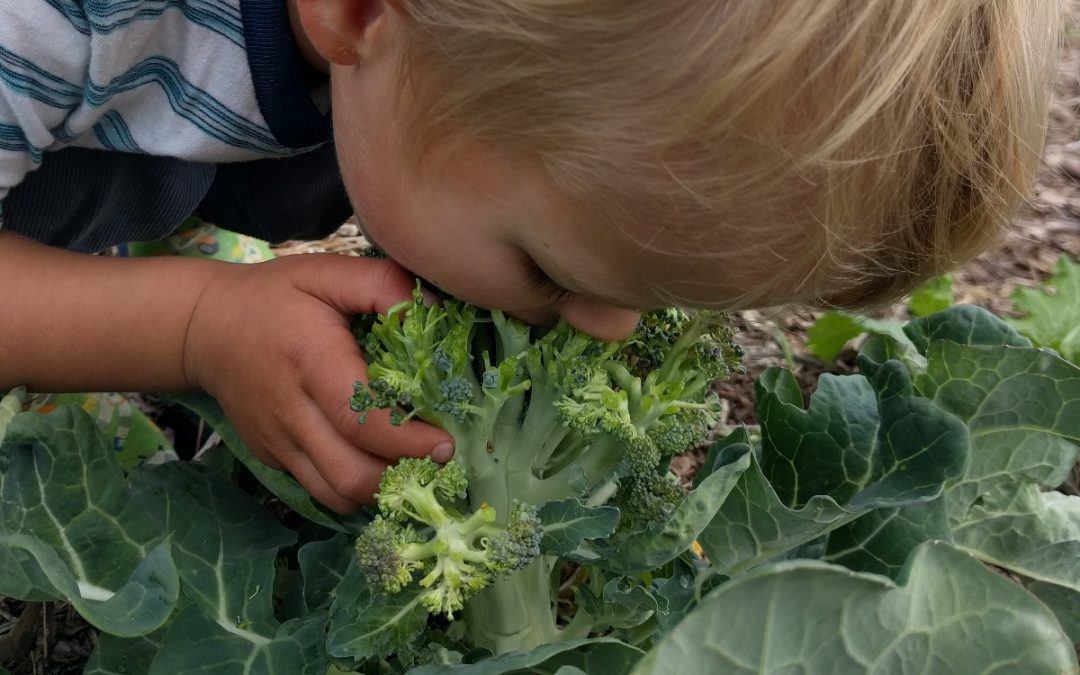
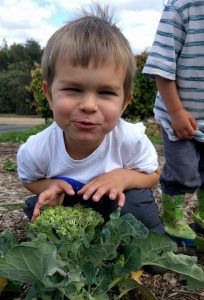
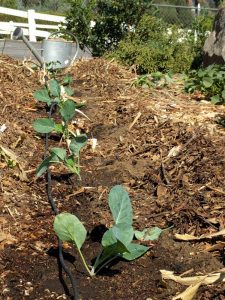

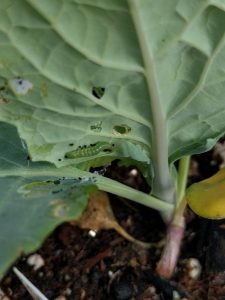


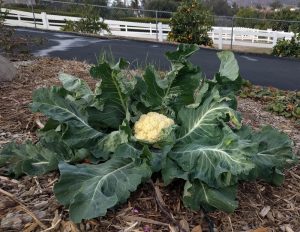
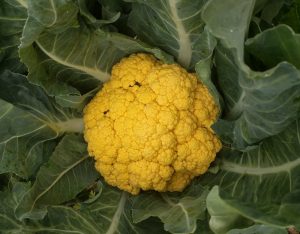
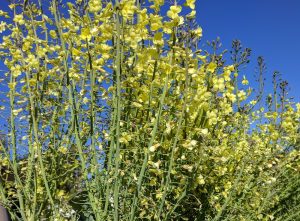
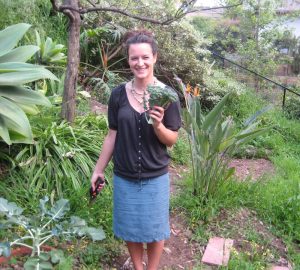


Yet, another great post by you. Just wondering, are you writing things on Saturdays now?
Hi Shalom,
Thank you. I’m only writing posts on Saturday when I bite off more than I can chew in life and can’t get a quality post done by Friday. Sorry about that. Friday is still the day.
Great read, thank you! I sent you an email with a couple of questions…
Kelley
Hey Greg: Hope you and your family had a great holiday season! I am growing cauliflower for the first time, from seed, variety cheddar. I just harvested my first one and it seems tough and dry. What do you think happened? Thanks!
Hi Judith,
Good to hear from you, and thanks for the well wishes. I too am growing Cheddar cauliflower right now and am in the middle of harvest . . . so I went out and sampled a few. Here’s what I tasted: the smaller, tighter, younger heads were moister and sweeter whereas the larger, more open heads were harder, drier, and not nearly as sweet.
My advice would be to harvest earlier. Harvest when the head is still small and still appears completely dense; if you can see any space between the florets, it’s too late (to taste prime).
You might wonder why I have some overmature heads out there in my garden, and it’s because I rarely get to harvest the heads at all these days. My kids start eating them right off the plant. And now I understand why they’re always going for the small and newly formed heads: because they taste the best.
Hi Greg!
Encouraged by you, I buried food scraps in May, sowed some seeds from a crop swap in between the food scraps late August, and put thin layers of compost from our pile on top every few weeks. I’m not much of a waterer, so I experimented by making this row under my eaves to capture morning dew. Thank you for all your great, low tech articles. Still enjoying this fantastic harvest. Small florets and lots of leaves, but they are all useful and delicious just the same.
Hi Amy,
I love these types of experiments. I learn so much from them. Thanks for sharing.
hi greg,
thank you for such a wonderful site – your posts have been a helpful guide in our garden! we live near balboa park and started our garden last year. by far, the very best thing we have grown is broccoli. (we’ve grown persian cucumbers, tomatoes, strawberries, beets, peas, watermelon, a variety of herbs – all good, but nothing like the broccoli), it was astonishingly good. so good my kids eat it, raw stem and all. broccoli you buy at your local organic store tastes dull and far to bitter by comparison. our head was enough for 3 different dinners (generous servings, double servings for the kids, for a family of 4).I wanted to wait for sideshoots, but i noticed little black dots in the stems where i had cut and worried about rot. my question – i’ve read something about a bacteria or mold that can infect your soil if you plant broccoli in the same bed too much. i’m wondering how you avoid this. what do you rotate into that spot when not growing broccoli? thank you!
Hi Rachel,
That’s so exciting! I loved reading that.
As for rotating crops after broccoli, I have only noticed that corn didn’t do great when following broccoli one time. That year I grew corn in two spots, and in the spot that followed broccoli it did noticeably worse. So I wondered if corn doesn’t like to follow broccoli in general, but I’ve never followed up on it and I’ve yet to plant corn after broccoli again. I think I will this year in order to see if it was just a one off.
Every other crop I’ve planted after broccoli has done fine. So I’d say try anything, and if you end up putting corn there tell me how it goes.
Hi Greg,
Thank you so much for sharing your knowledge and expertise of growing food at home! I live in the San Fernando Valley (Los Angeles County) and have purchased broccoli seeds to plant in September. Could you please recommend the best type of soil or soilless mix to use? Should they be started indoors or a shaded area outside? The temps right now are in the 90’s – 100+. Any help would be greatly appreciated!
Hello Greg and Yard Post readers – I don’t know who else to turn to here – we live in Pasadena and I had a great start with about a half dozen or so broccoli and cauliflower plants. My crops are being absolutely DECIMATED, overnight, by what appears to be cutworms. I have only ever caught one of them, last night in fact. And they are climbing up the stems, and somehow *chopping down and eating entire leaves and such* to the point of leaving only the main stem emerging from my containers. Yes, in containers in a concrete back yard in the city, I am having this issue! Today I even took one of the plants that was eaten on overnight last night and took out the top several inches of potting soil to try to find the (sleeping) cutworms, but I did not find anything! Is it possible that other animals are eating, incredibly, my broccoli and cauliflower plants overnight?
Hi Mark,
So frustrating! I’d consider rabbits. They work at night, and they’ll eat entire leaves or entire small plants down to a nub in one night. Plus, they love young broccoli and cauliflower leaves. Check out: https://gregalder.com/yardposts/protecting-vegetables-and-fruit-trees-from-rabbits/
Greg – you’ll appreciate this – I am the “container gardening” guy from Pasadena. 🙂 We have pet rabbits, it is definitely not them! However, I did purchase a motion activated “trail camera” and set it up last night … it’s a RAT eating my plants!!! Check it out: https://youtu.be/_UBnEF0uATc
Thanks for sharing, Mark. Good catch! I would not have suspected a rat. What a pain those critters are!
Hello,
Thank you for all this information!!!! I have a bed or roses I inherited in the house I live in and I’m considering pulling them out and planting broccoli and cabbage there. Do you think I’ll have a problem with the soil? I don’t know anything about roses and don’t really care for the look of the plant.
Is broccolini different seeds/plants from broccoli? I’m wondering if you plant it at the same time as broccoli? I also can’t find seeds for broccolini.
Terry you can find broccolini at Rare Seeds.com
Thanks for sending this info out about broccoli & cauliflower. I planted both in 2020, and I was surprised how well they grew. It’s true that they taste so good grown from the garden. The major problem I had were the earwigs. I had so many I could hardly keep them off both types of plants. I used diatomaceous earth, but it didn’t work very well. I’m gonna try it again and see what happens. Thanks again, Greg.
I am trying broccoli this year. I have the seeds soaking to plant in little pots tomorrow in worm castings. Plan to wait until they get 3 to 4 inches tall.
Sounds like a good plan, Randy. Hope all goes well. A planting practice that I’ve found very effective with broccoli is to plant the seedlings deep, completely burying their stems. After doing this, the stems form adventitious roots and the plants stand more erect and sturdy in the winter’s wind and rain. See if it works for you too.
Great advice! For their size, broccoli seeds sure are . . . ambitious. Some are already a couple of inches tall, two tiny leaves on a tall stem.
I’ve recently read that aphids hate banana peel. Will try this year. Broke down and got row covers for my broccoli and cabbage. The pests were too bad and the family stopped eating broccoli for a while after I missed a caterpillar! We for generally love the stuff. The covers should last 2-3 years. Thanks for the info in your posts. Most info takes frost into consideration but not length of days. Makes it much more difficult when you want to try something new
Hi Katharine,
I have also been using row covers this year, and they have been working well (not perfectly, but well). It’s nice to have less buggy broccoli and cauliflower!